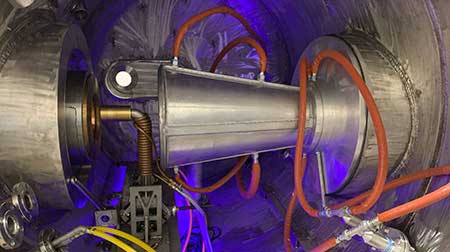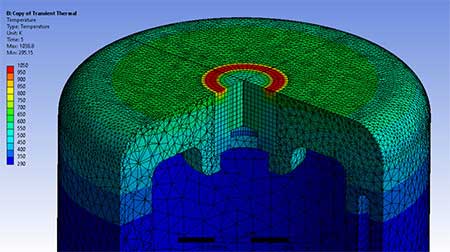Ansys and University of Texas at Arlington Boost High-Speed Hypersonics Research and Development
New collaboration aims to save hundreds of millions of dollars in hypersonic aircraft, spacecraft and missile prototype testing.
Latest News
September 29, 2020
The University of Texas at Arlington (UTA) and Ansys are developing an advanced design and analysis workflow for validating system models in the U.S. government's current and next-generation hypersonic vehicles. The workflow will fast-track certification of simulation software codes, help decrease hypersonic technology development spending and increase engineering productivity, according to Ansys.

The U.S. Department of Defense and NASA have prioritized the development of high-speed hypersonic aircraft, spacecraft and missiles. However, funding may not be sustainable as a single prototype flight test costs taxpayers as much as $100 million. While various factors have slowed the advancement of hypersonic flight, Ansys' simulation solutions help spur the development of key hypersonic technologies ranging from thermal protection systems for spacecraft reentry to scramjet combustion technology for hypersonic travel.
Ansys' high-fidelity physics-based solvers spur hypersonics experimental research—from simulating the design and analysis of air and fuel mixing inside a scramjet to measuring the impact of thermal stresses on vehicle sensors that operate in harsh environments. By simulating these systems, engineering teams can save hundreds of millions of dollars in physical prototype testing and further research and development using fewer employees.
After running Ansys' hypersonic systems models, UTA engineers can verify the software code's accuracy by conducting physical high-speed flight tests in UTA's state-of-the-art arc jet hypersonic wind tunnel.

“Testing and validating physics-based component models within a wind tunnel that operates at hypersonic speeds and temperatures delivers a major technological advantage for our mutual customers, driving faster development of cost-effective solutions,” says Luca Maddalena, professor of Aerospace Engineering and director of the UTA's Aerodynamics Research Center. “The university's arc jet will help validate Ansys' software codes for hypersonic applications and power leading-edge research in aerothermodynamics, scramjet propulsion, ablation and much more.”
“Our mutual customers in the air and space domains demand substantial reductions in time to market, which creates tremendous challenges for engineering highly complex hypersonic vehicles,” says Prith Banerjee, chief technology officer at Ansys. “By working closely with one of the top universities in hypersonics research, our combined capabilities will shift the paradigm away from expensive and lengthy physical prototype testing to significantly advance the development of current and future hypersonic vehicles.”
Sources: Press materials received from the company and additional information gleaned from the company’s website.
More Ansys Coverage
Subscribe to our FREE magazine, FREE email newsletters or both!
Latest News
About the Author
DE’s editors contribute news and new product announcements to Digital Engineering.
Press releases may be sent to them via [email protected].






